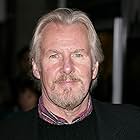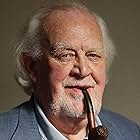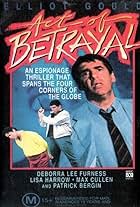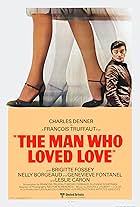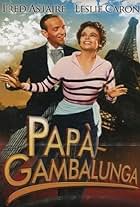VALUTAZIONE IMDb
6,6/10
161
LA TUA VALUTAZIONE
Aggiungi una trama nella tua linguaDuring WWII penniless American painter Philip Weber decides to collaborate with the Nazi leaders and help them steal priceless French artwork to keep his room in the chic Ritz Hotel and indu... Leggi tuttoDuring WWII penniless American painter Philip Weber decides to collaborate with the Nazi leaders and help them steal priceless French artwork to keep his room in the chic Ritz Hotel and indulge in the pleasures of Nazi-occupied Paris.During WWII penniless American painter Philip Weber decides to collaborate with the Nazi leaders and help them steal priceless French artwork to keep his room in the chic Ritz Hotel and indulge in the pleasures of Nazi-occupied Paris.
Foto
Mylène Demongeot
- Madame Rochaise
- (as Mylene Demongeot)
Trama
Lo sapevi?
- QuizBased on actual events.
- ConnessioniEdited from Dove osano le aquile (1968)
Recensione in evidenza
Based on a 1981 novel by A.E. Hotchner, "The Man Who Lived at the Ritz" is a strange piece of fiction that includes many real characters who, themselves, seem to be a mixture of reality and fiction. How much of either one is difficult to say, judging even from early newspaper reviews of the film. After a short prologue, most of the film takes place in World War II Paris. But, even the production information about this movie is sketchy. IMDb lists it as a TV movie, made by a company named Harmony Gold in the U.S. Yet the IMDb Web site only shows release dates of June 23, 1989 in Japan and July 29, 1991 in Sweden. It very likely was not carried on TV in the U.S., or it was toned down a great deal because of the considerable nudity. This mostly is in the portrayal of a high class "men's club" of prostitution in Paris.
The film runs 200 minutes, and is presented on DVD in four episodes. They are of varying lengths as well. They are further broken down into chapters with breaks and brief recaps such as are used in TV series and films. The breaks allow for commercials. Besides the awkwardness in this format, the production overall seems very stagy. The production values are not particularly good. The script seems disjointed and choppy, and the acting is not very good. Even Joss Ackland's role as Herman Göring is overdone.
I have no idea how closely the film follows the book. It is about an American whose uncle takes him to Paris for a vacation in 1927 after he graduates from the St. Louis Art Institute. Perry King plays the "hero," Philip Weber. His uncle dies of a heart attack and bequeaths Philip a modest sum in his will toward a permanent residence at the Ritz Hotel for as long as he likes. He spends his time as a painter, and 13 years later, World War II happens. That's about the way it unfolds in the movie – it just happens. There's no build up, concern, worry. We see some newsreel film scenes of the German war machine while the credits run, but the main character seems oblivious to this until, all of a sudden, the Germans are in Paris.
So, during the early stages of the war, he is a "neutral" from the neutral U.S. He is one of a few long-term residents allowed to stay in the Ritz when the Nazis take over and house party officials and high-ranking German officers in the Ritz. Eventually, our reluctant hero is drawn into the underground or resistance.
The film has very little to do with the war. It even seems oblivious to what is going on outside of Paris. It dwells considerably on the efforts by various Nazi leaders to steal the great art works of France for their private collections and for the grandiose museum planned by the Fuehrer, Adolf Hitler. The film dwells a lot on personal feuds and competitions between Göring, Josef Goebbels, Heinrich Himler and others for the stolen art works. About the only top Nazi leader who doesn't appear in Paris during this film is Adolf Hitler. And that's really strange, because Hitler did go to Paris to celebrate its conquest right after it fell to the Germans.
The film has many scenes of bare-breasted women in evening gowns, and other snapshots of men and women being rousted from their fantasy sex roosts. It seems preoccupied with Göring and portrays him with numerous fetishes, sexual fantasies and other eccentricities. Again, it's so bizarre, that one finds it difficult even to try to separate reality from fiction. As further witness to the weirdness of this film, it has a conglomeration of other known personalities of the time, including Coco Chanel and Edith Piaf. There also is a lot of name-dropping in the dialog, including Charles Lindbergh, Ernest Hemingway, and numerous painters. Leslie Caron plays Chanel, David McCallum plays Charles Ritz, Barrie Houghton plays Goebbels. It has a huge cast of characters.
IMDb lists this as a drama. It is a weak war drama with a touch of espionage. Otherwise, it's a film that gets mired down in self-indulgence, pettiness, misogynism or mistreatment of women, sexual deviation, and escapist living during a time of world crisis. Even the serious and tragic couple of instances in the film are soon smothered by its preoccupation with hedonism.
This film is one of a very few that have anything to do with war that I do not include in my extensive war films library. I think it's just that poor and off-track. The few stars I give this film are for the one binding plot that gives it any sense of coherence – the confiscation of precious art pieces. That was a reality of the war, and therefore it lends a touch of historical reality to this film. So, unless one is interested in that aspect of Nazi history, I don't think many would be able to stay awake or tuned in to this movie.
The film runs 200 minutes, and is presented on DVD in four episodes. They are of varying lengths as well. They are further broken down into chapters with breaks and brief recaps such as are used in TV series and films. The breaks allow for commercials. Besides the awkwardness in this format, the production overall seems very stagy. The production values are not particularly good. The script seems disjointed and choppy, and the acting is not very good. Even Joss Ackland's role as Herman Göring is overdone.
I have no idea how closely the film follows the book. It is about an American whose uncle takes him to Paris for a vacation in 1927 after he graduates from the St. Louis Art Institute. Perry King plays the "hero," Philip Weber. His uncle dies of a heart attack and bequeaths Philip a modest sum in his will toward a permanent residence at the Ritz Hotel for as long as he likes. He spends his time as a painter, and 13 years later, World War II happens. That's about the way it unfolds in the movie – it just happens. There's no build up, concern, worry. We see some newsreel film scenes of the German war machine while the credits run, but the main character seems oblivious to this until, all of a sudden, the Germans are in Paris.
So, during the early stages of the war, he is a "neutral" from the neutral U.S. He is one of a few long-term residents allowed to stay in the Ritz when the Nazis take over and house party officials and high-ranking German officers in the Ritz. Eventually, our reluctant hero is drawn into the underground or resistance.
The film has very little to do with the war. It even seems oblivious to what is going on outside of Paris. It dwells considerably on the efforts by various Nazi leaders to steal the great art works of France for their private collections and for the grandiose museum planned by the Fuehrer, Adolf Hitler. The film dwells a lot on personal feuds and competitions between Göring, Josef Goebbels, Heinrich Himler and others for the stolen art works. About the only top Nazi leader who doesn't appear in Paris during this film is Adolf Hitler. And that's really strange, because Hitler did go to Paris to celebrate its conquest right after it fell to the Germans.
The film has many scenes of bare-breasted women in evening gowns, and other snapshots of men and women being rousted from their fantasy sex roosts. It seems preoccupied with Göring and portrays him with numerous fetishes, sexual fantasies and other eccentricities. Again, it's so bizarre, that one finds it difficult even to try to separate reality from fiction. As further witness to the weirdness of this film, it has a conglomeration of other known personalities of the time, including Coco Chanel and Edith Piaf. There also is a lot of name-dropping in the dialog, including Charles Lindbergh, Ernest Hemingway, and numerous painters. Leslie Caron plays Chanel, David McCallum plays Charles Ritz, Barrie Houghton plays Goebbels. It has a huge cast of characters.
IMDb lists this as a drama. It is a weak war drama with a touch of espionage. Otherwise, it's a film that gets mired down in self-indulgence, pettiness, misogynism or mistreatment of women, sexual deviation, and escapist living during a time of world crisis. Even the serious and tragic couple of instances in the film are soon smothered by its preoccupation with hedonism.
This film is one of a very few that have anything to do with war that I do not include in my extensive war films library. I think it's just that poor and off-track. The few stars I give this film are for the one binding plot that gives it any sense of coherence – the confiscation of precious art pieces. That was a reality of the war, and therefore it lends a touch of historical reality to this film. So, unless one is interested in that aspect of Nazi history, I don't think many would be able to stay awake or tuned in to this movie.
I più visti
Accedi per valutare e creare un elenco di titoli salvati per ottenere consigli personalizzati
Dettagli
- Data di uscita
- Paese di origine
- Lingua
- Celebre anche come
- The Man Who Lived at the Ritz
- Azienda produttrice
- Vedi altri crediti dell’azienda su IMDbPro
- Tempo di esecuzione3 ore 20 minuti
- Mix di suoni
- Proporzioni
- 1.33 : 1
Contribuisci a questa pagina
Suggerisci una modifica o aggiungi i contenuti mancanti

Divario superiore
By what name was L'uomo che viveva al Ritz (1988) officially released in Canada in English?
Rispondi




